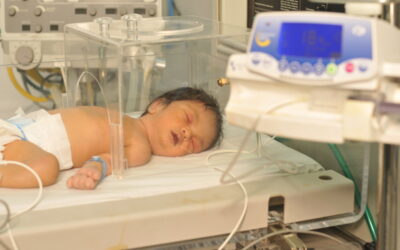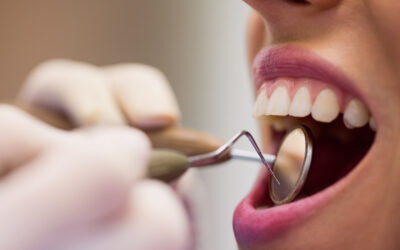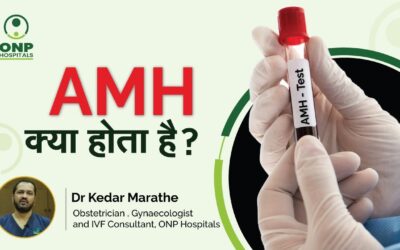Introduction Welcome to ONP Hospital, where the future of neonatal care unfolds within our state-of-the-artNeonatal Intensive Care Unit (NICU). Our commitment to delivering the highest standard of carefor our tiniest patients is evident in the cutting-edge technology,...
Varicose Veins – Causes, Symptoms, Treatments
Overview
Varicose veins develop when the veins right under the skin’s surface are damaged, enlarged, and overflowing blood.
It is via veins that blood returns to the heart. Varicose veins usually affect the legs, the arteries carrying blood away from the heart. Vessel walls or valves that prevent blood from backing up in veins may have a genetic weakness in around half of the instances, and this impairment is likely to be passed down the generations.
What are Varicose Veins?
It is common for varicose veins to appear as blue cords that protrude from under the skin’s surface and bulge outward. It’s virtually often the legs and feet that are affected. This condition is known as superficial varicose veins, and dilated capillaries define it in the surrounding area called spider veins. It’s very uncommon for them to feel uncomfortable, but they have no lasting effects on health. When inflamed, they may cause swelling ankles, itchy skin, and discomfort in the afflicted limb.
Causes of Varicose Veins
When the walls of veins weaken, varicose veins form, the weaker walls of the vein enable it to expand when blood pressure rises. It becomes more difficult for the valves in the vein to function properly as the vein lengthens. The vein swells, bulges, and twists because of sluggish blood.
Several factors may cause the walls and valves of veins to weaken, including:
- Hormones
- Becoming older
- Excessive body weight
- Tight-fitting clothes
- Pressure in the vein because you have been standing for a long time
Symptoms of Varicose Veins
Sometimes, you may not feel a thing if you have varicose veins. However, you may have varicose veins if you notice these symptoms:
- A dark purple or blue hue to the veins
- Twisted and bulging veins on the legs that seem like wires
Signs and symptoms of pain may include:
- Leg aches or heavy sensations
- You’re experiencing excruciating pain in your lower legs, as well as swelling and tingling.
- Pain worsens after prolonged periods of sitting or standing.
- A tingling sensation in one or more of your blood vessels.
- Skin blemishes surrounding varicose veins
Smaller spider veins are like varicose veins. However, they are less noticeable. Spider veins are often red or blue and closer to the skin’s surface.
Spider veins may be present on the face and the legs. A spider’s web-like structure may be found in a variety of sizes.
Treatments
Treatment for varicose veins is available in a variety of ways. These are only a few possibilities:
Self-care
To ease discomfort and prevent varicose veins from worsening, self-care measures such as exercising, lowering weight, not wearing tight clothing, elevating your legs, and avoiding long periods of standing or sitting are necessary.
Compression stockings
For many people, compression stockings are the initial therapy option they explore. They assist your veins and leg muscles in transporting blood more effectively by consistently squeezing your legs. Types and brands have different levels of compression.
Almost any pharmacy or medical supply shop will sell you compression stockings if you ask for them. Varicose vein problems may warrant the use of prescription-strength stockings, which may be reimbursed by insurance.
Additional treatments for more-severe varicose veins
A doctor may recommend one of these varicose vein treatments if you don’t react to self-care or compression stockings or if your issue is more severe.
- Sclerotherapy: During this operation, your doctor injects a solution or foam into the tiny and medium-sized varicose veins to shut and scar them. The repaired varicose veins should disappear within a few weeks.
Sclerotherapy is successful when performed properly, even if many injections are required in the same vein. There is no anesthetic required, and it is possible to have sclerotherapy done in the doctor’s office.
- Laser treatment: Smaller varicose veins and spider veins are being treated using modern laser technologies. Laser therapy delivers powerful bursts of light to the vein, which causes the vein to diminish and eventually dissolve. There are no surgical incisions or needles involved.
- Vein stripping and high ligation: In this operation, a tiny incision is made in the skin, and the vein is tied up before it reaches the deep vein. For the vast majority of patients, this is a non-invasive outpatient surgery. Your leg will continue to get blood flow even if you remove the vein since the leg’s deeper veins handle the bigger amounts of blood.
- Ambulatory phlebectomy: Using a series of microscopic skin punctures, your doctor eliminates minor varicose veins. This outpatient technique anesthetizes the areas of your leg that will be punctured. Scarring is rare and usually not severe.
- Endoscopic vein surgery: Only in the most severe cases of leg ulcers will this procedure be necessary. Your surgeon inserts a tiny video camera into your lower leg to eliminate varicose veins and then removes the veins via small incisions. We use outpatient surgery for this operation.
Conclusion
Varicose veins may reappear despite the best treatments. After therapy, they are more likely to return to women who get pregnant. If you are overweight or have a sedentary lifestyle, you are more likely to develop varicose veins again.
If you notice the symptoms mentioned above, consult an expert immediately. You can also book an appointment with our varicose vein doctors to get the best treatment.
About Author
More Blogs
Transformative Care: Navigating the State-of-the-Art NICU Facility at ONP Hospital
Introduction Welcome to ONP Hospital, where the...
Plant-Powered Health: Exploring the Benefits of a Vegetarian Diet
Introduction The debate between vegetarian and...
Battling Oral Cancer and Tobacco: Understanding Treatments, Diagnosis & Prevention
Introduction Oral cancer, a type of head and...
More Videos
Dr. Amita Phadnis’s Full Speech on Survival & Health Rights at UNICEF India.
Dr. Amita Phadnis ,M.D., Gave a Motivating Speech
Breast cancer is cancer that forms in breast cells. Women are mostly diagnosed with this cancer. Although it can be seen in both men and women
What is AMH
The granulosa cells in your ovarian follicles create the anti-Mullerian hormone, often known as AMH. According to the American College of Obstetricians and Gynecologists (ACOG), the generation of AMH is a reflection of your ovarian reserve.
FAQ’S
Pregnancy and Migraine Headaches: What Women Need to Know
When you are pregnant or breastfeeding, then...
What Is the Problem of Orthopedics in Children?
While orthopaedic problems are commonly seen in and associated with the elderly, it’s important to be alert regarding the fact that they can afflict young people and children as well.
All You Need to Know About Reproduction
Most science students have to study about reproduction in their high school syllabus, and some learn from their parents, who may discuss it even earlier. It’s a very good thing to know about our own bodies…



 Home
Home Videos
Videos

